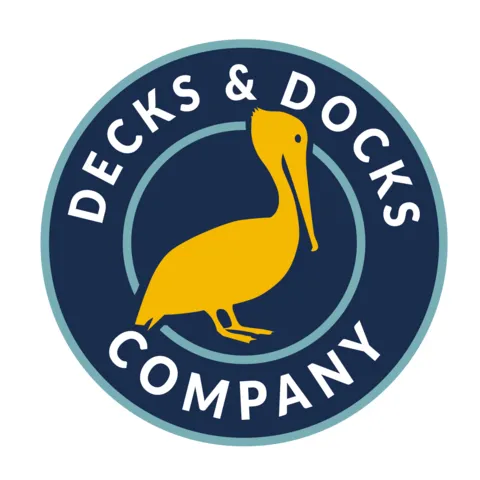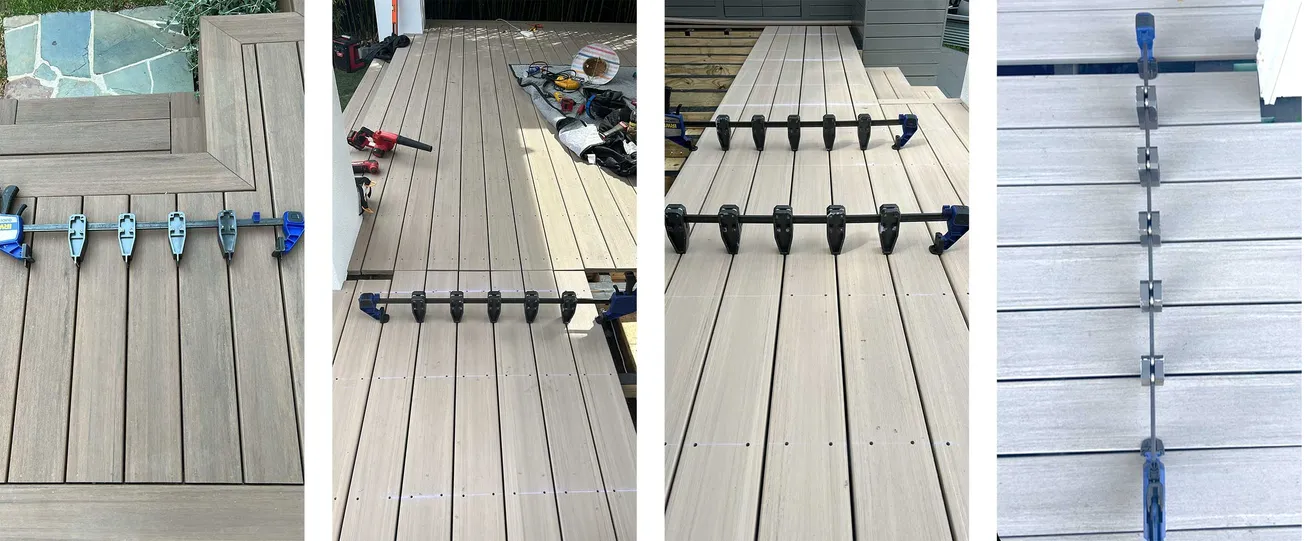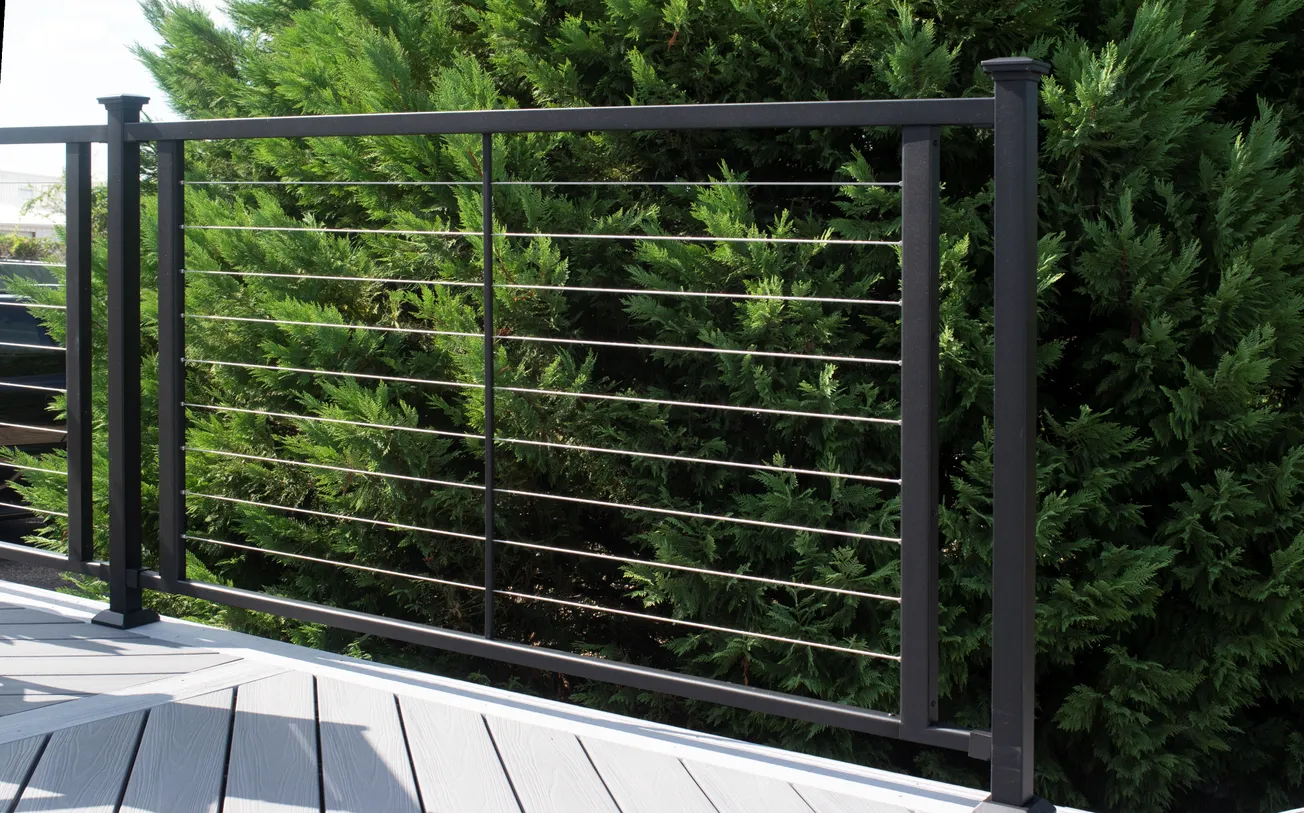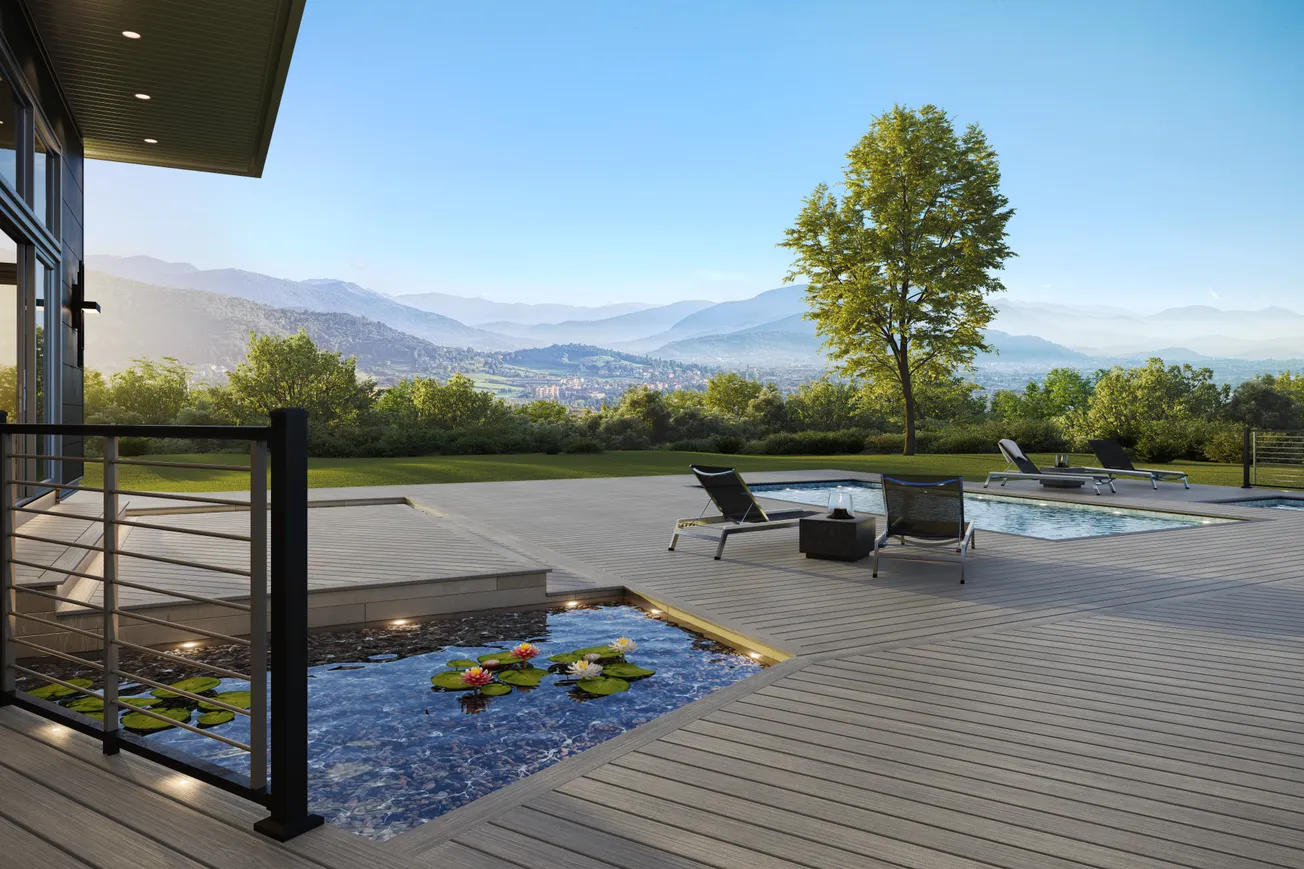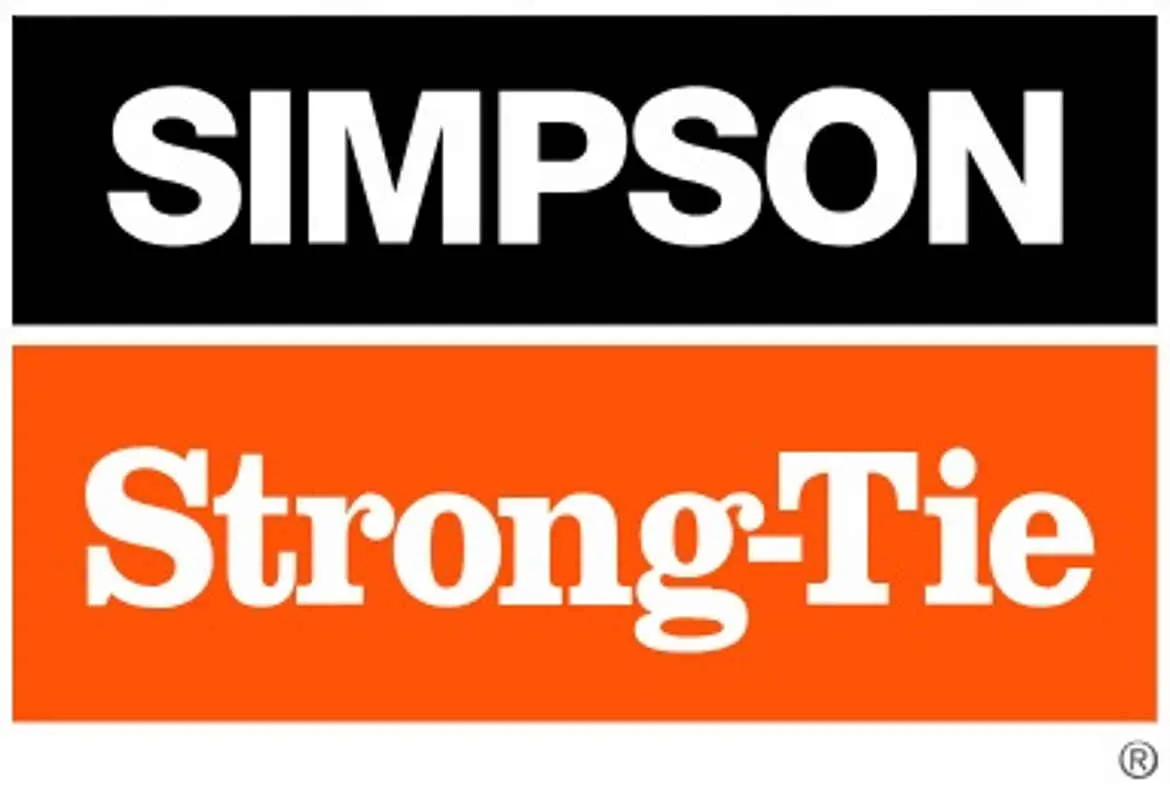Table of Contents
WE SEE HIGHER-END, award-winning projects in every issue of this magazine and every day on social media. As amazing and inspiring as these projects are, they account for a small percentage of the overall job count delivered across North America each year.
This means that the majority of builders in the industry are delivering something else. This includes a wide range of options from simple to complex wood and composite decks of all sizes and categories. These builders design, build, and sell what the masses can afford and demand.
Regardless of where you operate, embrace it and make the most out of it. Take pride in what you do and strive to be the best in the “category.”
Almost all homes require a patio or deck, but not all market demographics support the higher-end projects. Budgets are often based on percentages of the home value and in many areas that doesn’t allow the dollars needed to deliver anything beyond average.
Figures vary but it’s estimated that the current demand for wood decks in the U.S. is around $7.8 billion with alternatives at $3.5 billion (globally the numbers are much higher). Considering the lesser cost of pressure treated wood decks, lower- to mid-cost projects will account for a much higher build count.
Ten to 20% of lower cost home values don’t add up to allow for a higher cost investment. Many customers don’t have the budget or desire to invest in a higher-cost option, and just want simple function.
Product manufacturers aside, customers, contractors, and building supply stores influence selection—customers because of budget and option awareness, contractors because of customer budgets, market demographics, preference, and sometimes skill and confidence levels in sales and experience. Lumberyard approaches vary, with some promoting alternatives while others are order-takers for wood or whatever the customers think they want.
Different regions of the country also factor in. Mid Atlantic and New England markets will have higher percentages of alternatives than Southeastern or much of the Midwestern regions. Canada and the Western regions of the U.S. may have a higher mix of alternatives and higher wood quality offerings. Pressure treated still dominates much of the country especially the Southeast.
Even the most talented and inspired builder may choose to keep it simple with deliveries if that’s what their market dictates. It simply requires an assessment and evaluation of your market and yourself, and then adapting your approaches accordingly.
In some cases, experience determines where you operate. Some builders are newer to the business and have not yet progressed from an experience standpoint to where they will ultimately end up, which temporarily limits them. For those that are in good markets but are held back because they currently don’t have the skill, motivation, ambition, or creativity to operate in a high-end arena, hopefully progression will occur.
Most award winners I know don’t base their business on trying to win awards. They strive to make the most out of every design opportunity regardless of size. If they happen to hit on one that they believe will compete, they enter it. They plan for deliveries that they can be profitable with, which includes plenty of average, bread-and-butter decks. Awards provide opportunities to leverage off of, but don’t necessarily pay the bills. A solid business model does.
Deck builders can be creative and profitable in all categories. Each requires a balance with sales, overhead, and production. Whether it’s wood decks, simple composites, or highly designed monster decks, there’s a place and business model that works for all involved.
You may or may not provide the same inspiration or win the awards that some of the higher-end builders do, but you can be profitable and have a solid business. When it comes down to it, what would you rather have the most of, awards on the wall or money in the bank? It’s better to have a good business model with lower end than a bad one with higher end.
At the end of the day, the right choice is where you’re comfortable and what your market allows. What’s important is that you make the most out of it by adopting a sound building philosophy along with business and operational efficiencies that work.
One of the challenges with simple decks is that the easier something is to do, the more builders that can do it. Simple makes it more challenging to separate yourself from others, partly because there are more others. It really can be a race to the bottom from a pricing perspective for some builders.
Challenges with larger, higher-end jobs are knowing what it takes to deliver, what to charge to be profitable, and how to present and sell the value. Selling at the right price and being efficiently productive are keys at any level.
As you move towards the higher-end deliveries, the competition count may drop off. To progress beyond average, you’ll need a healthy supply of inspiration, motivation, ambition, organization and inner drive. Otherwise, no matter how talented you are or how good your market demographics are, you’re not likely to achieve the rewards possible.
At any level be sure you’re using the best possible materials combined with the best installation techniques. Be realistic when setting short- and long-term performance and maintenance expectations to your customer. Build and protect your reputation by being honest with what you offer.
If you’ve read my previous columns, you’ll know I’m a believer in alternative framing, decking, and railing products. I’m also skeptical about today’s pressure treated wood performance. But I also realize that wood decks will continue to dominate market share for the foreseeable future simply because of market demographics and the price point.
So, although I believe this industry is better off as more alternatives are used, this piece is intended to encourage builders regardless of where you play and to be proud of what you do.
It’s a push to be the best you can be to the extent your skills and market demographics allow. It’s intended to encourage you to max out the meter needle when it comes to professionalism, creativity, and to make the most of every design opportunity, regardless of size.
It’s a suggestion to focus on a smooth delivery and be the best possible in your category. It’s to remind you to create the layers of credibility by being organized with photos, reviews, and your presentation to a customer.
But if your passion drives you towards higher-end and you’re being held back because you live in a market that limits your potential, maybe you should move.



